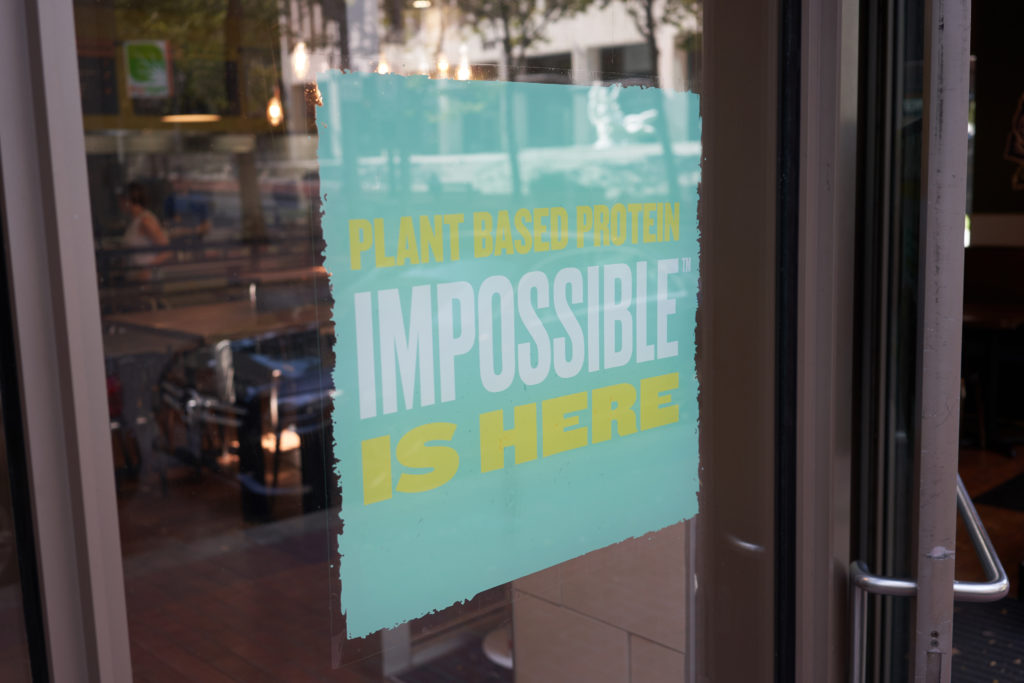
If you’ve been to a grocery store lately, you’ve likely seen the growing selection of plant-based alternatives at the meat counter or dairy section. Faux-meat products seem to be everywhere and some of the world’s largest companies are taking advantage of this skyrocketing trend. In September 2020, supermarket giant Tesco announced plans to increase sales of plant-based products by 300% by 2025. In November, McDonald’s revealed its plans for a plant-based burger (aptly named McPlant). And later in the year, Unilever set a sales target of $1.2 billion from meat and dairy alternatives over the next five to seven years.
These moves have largely been made in response to consumer demand. Over the past year, the COVID-19 pandemic has created concerns over the safety of meatpacking facilities and how the virus spreads. In terms of the supply chain, shortages at grocery stores early in the pandemic seemed to have resulted in booming sales of meat analogue products. And as awareness of the problems with our animal production systems continues to grow, consumers are choosing more eco-friendly options. The result is an increase of 264% in sales of plant-based meat as of May 2020.
While consumers are driving much of the push for plant-based products, some companies are pledging plant-based initiatives to help them with their broader sustainability goals. Livestock production accounts for 70% of all agriculture land used, occupies 30% of the land’s surface and is responsible for 18% of greenhouse gas emissions such as methane and nitrous oxide. To curb emissions, corporations like Smithfield Foods Inc., a pork producer and processor, and rival Tyson Foods Inc., one of the largest beef, pork and poultry processors, have pledged targets aimed directly at cutting production emissions over the next 10 years.
While goals, pledges and targets toward sustainability and plant-based manufacturing abound, how does the science behind plant-based meats measure up? Let’s take a look.
Advances in Lab-Grown Meat
In July, KFC announced its partnership with Russian company 3D Bioprinting Solutions to develop “bioprinting technology using chicken cells and plant material, allowing it to reproduce the taste and texture of chicken meat almost without involving animals in the process.”
This “motherless,” clean or cell-based meat, as it’s known in the industry, originates from animal cells in petri dishes. Since 2013, cellular agriculture has been on the rise, with more than $100 million in investments from billionaires and venture capitalists into at least 10 food tech startups.
Unlike the trend of replacing animal proteins with plant-based products like tofu, seitan or tempeh, cell-based meat will likely have an advantage in the long run from a consumer perspective because of the fact that it is still meat. While many scientists believe cellular agriculture could be the key to feeding our growing population in a more eco-friendly way, cell-based meat is hard to develop because of its structural complexity, and creating the right texture to coincide with taste has proven hard to replicate.
Plant-based pioneer Impossible Foods, which launched its flagship plant-based Impossible Burger in 2016, has been working steadily not just on creating consumer products but new technologies that will “completely replace the use of animals as a food technology by 2035.” This “Food-as-Software” system, which was coined by independent think tank RethinkX, is expected to be 100 times more land efficient, 20 times more time efficient and 10 times more water efficient than conventional meat processing, all while producing significantly less waste.
Currently, Impossible Foods is working on its first non-meat-analogue product, a dairy identical plant-based milk, as well as alternatives to shrimp, fish and steak.
Navigating Regulation
Like everything in the food and beverage industry, plant-based products and cell-based meat face regulatory hurdles about oversight. In 2019, the U.S. Food and Drug Administration (FDA) announced that it will oversee the cells harvested for cultured foods and that the U.S. Department of Agriculture (USDA) will supervise the development of the meat as well as product labeling.
This regulation is good news for cell-based meat companies who have argued for years that their product is meat and should be regulated as such. It also should help clear up current issues around labelling requirements – namely whether cell-based meat can be labelled as meat – in many states where legislation has been introduced to prohibit this from happening.
In Canada, where $19.6 million USD has recently been invested to increase the functionality of plant-based proteins and co-products, the industry must also contend with proposed regulations around labelling and fortification requirements. In November 2020, the Canadian government proposed changes to the labeling, composition and fortification of plant-based “simulated meat” products to ensure that consumers do not confuse plant-based alternatives for meat products.
Where Does Business Management Software Fit In?
To keep up with changing regulatory guidelines, complex manufacturing processes and evolving consumer trends, leading food and beverage companies turn to industry-specific software. An Enterprise Resource Planning (ERP) solution helps food and beverage manufacturers manage every aspect of their businesses, from production and operations, to finance, food safety, compliance, quality, traceability and more all from one integrated system.
At FoodBusiness ERP, our food and technology experts have experience working with plant-based companies and understand the complexities of the industry. To learn more about how FoodBusiness ERP can help your business, reach out to us. We’d love to chat.

